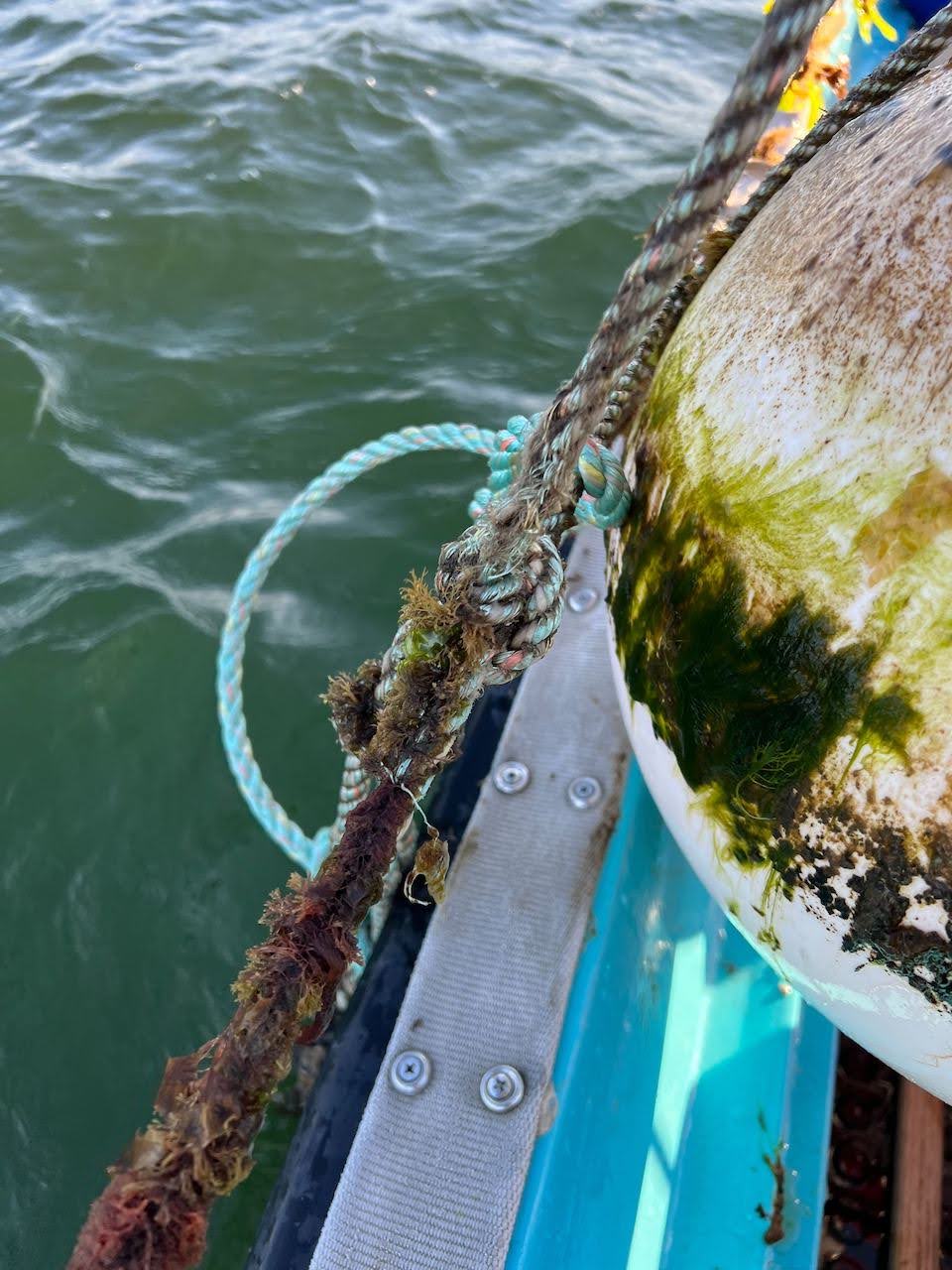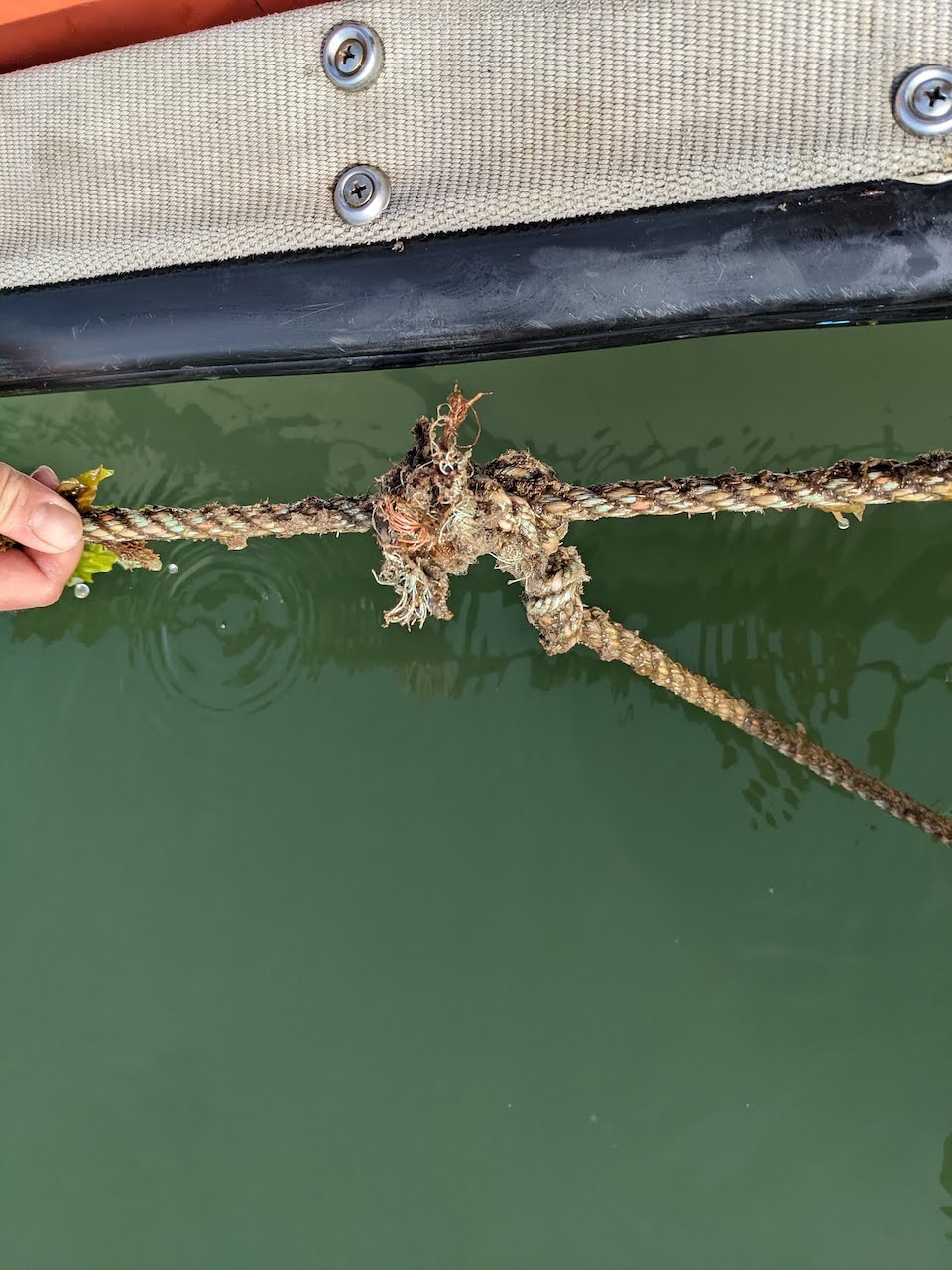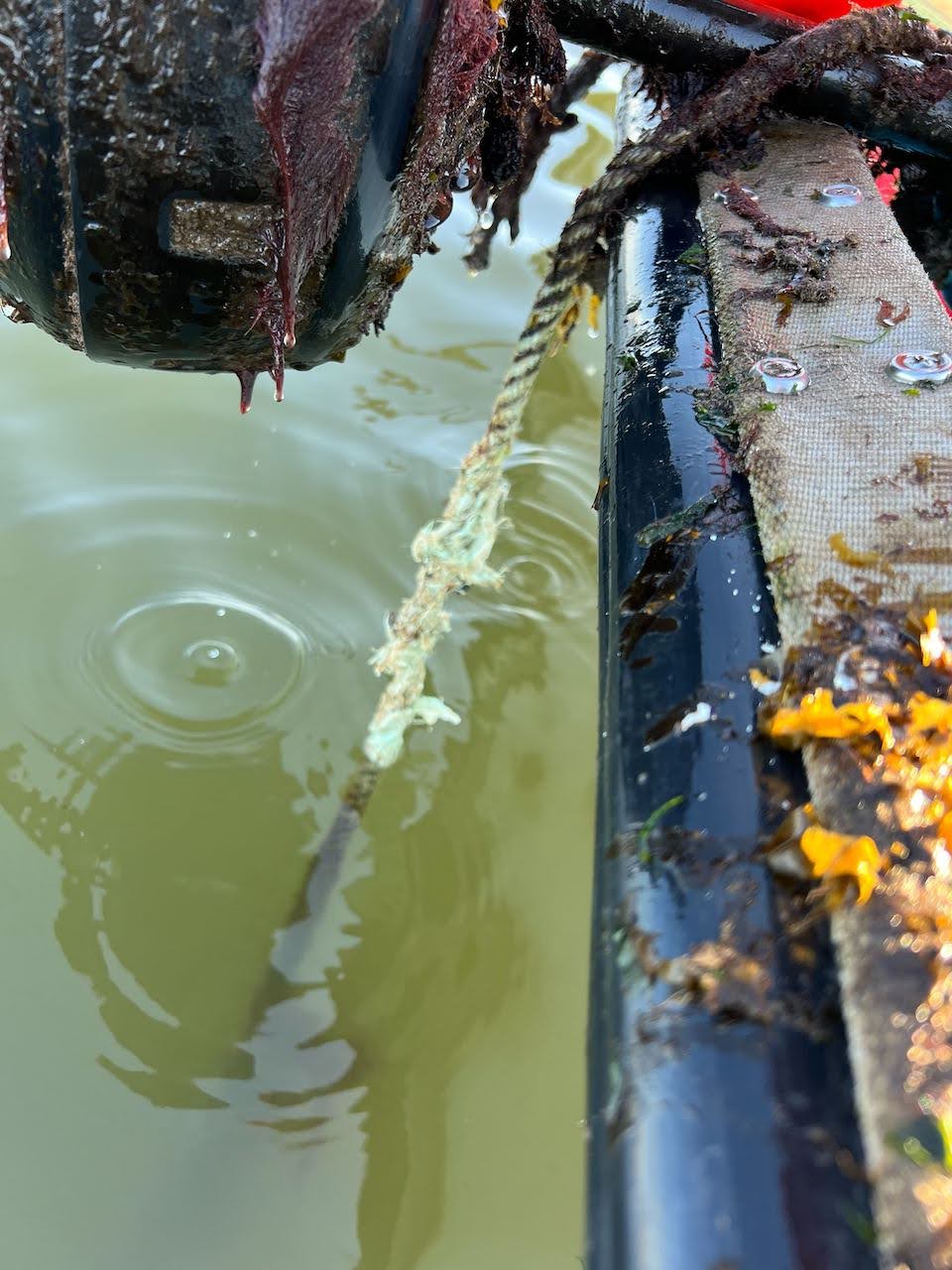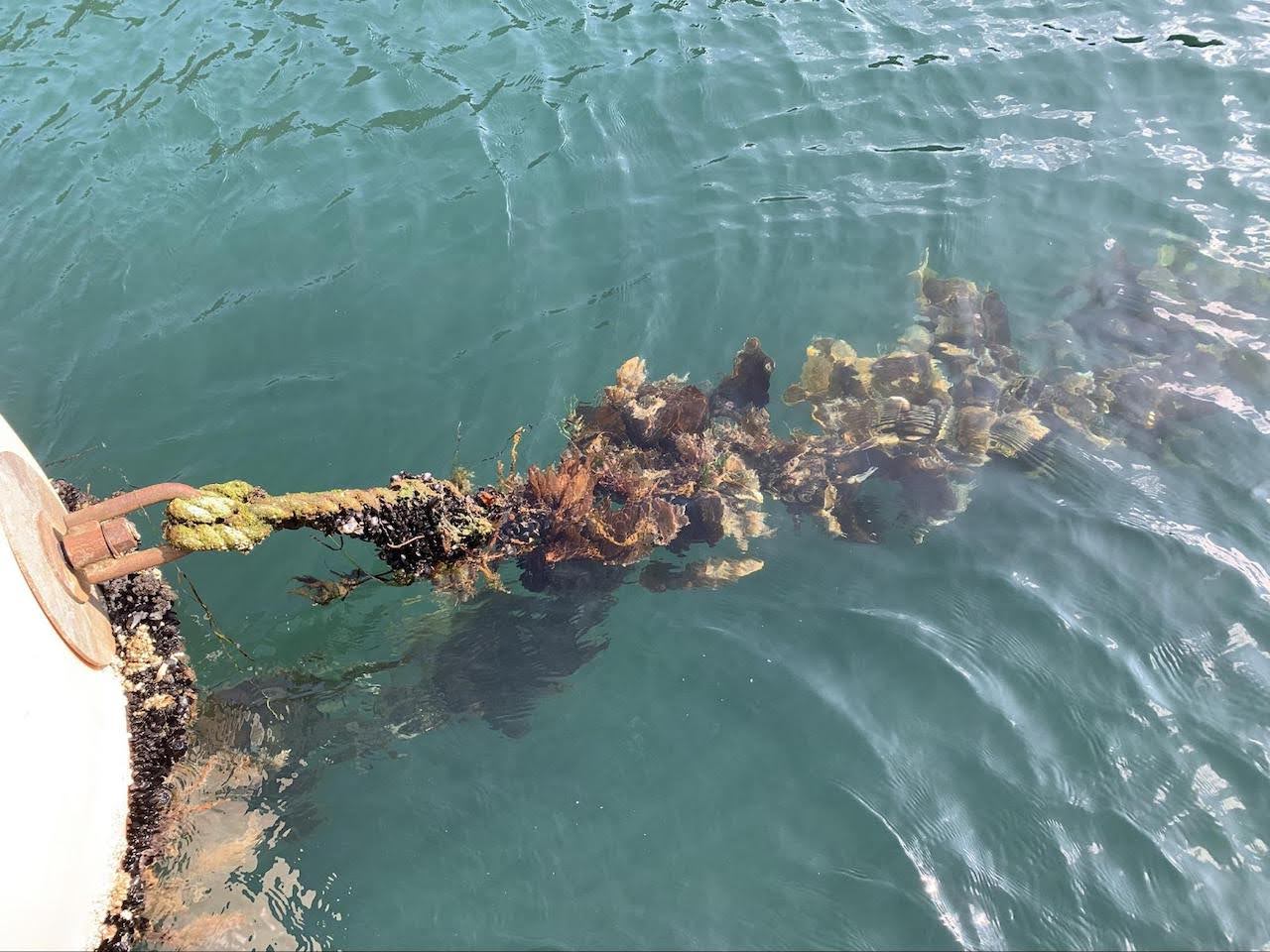Chafing
Chafing is when a line can begin to abrade and weaken due to consistent rubbing.
Back to: Monitoring & Maintenance
A few times a season you’ll want to inspect your lines for chafing.
Chafing tends to happen most often at connection points, especially between intersections of line and metal. You’ll want to check the points where your buoys are attached to the growline, connections at the spreader bar, and the parts of your anchoring system that are accessible from the surface. Any intersection of line and metal may be susceptible to chafe.
Chafing is when a line can begin to abrade and weaken due to consistent rubbing.



As you’re checking your lines for chafing, also keep an eye out for fouling. Biofouling on your kelp is a serious issue that can quickly degrade the quality of your kelp. Any sign of biofouling on your kelp is an indication that you should harvest quickly. Read more about spotting signs of biofouling on your kelp in the course on Harvest.
You may notice unwanted marine organisms growing on different parts of your system, other than your growlines. These can add weight and drag to your system, and you’ll want to remove them when you see them. A paint scraper with a round indent works well to scrape tunicates, mussels, and other creatures from your anchor and tensioning lines.
You should not scrape any portion of your growline once your seed has been outplanted, even if there are signs of fouling. Scraping the growline will cause your kelp to come loose, and result in a total loss of growth on that line.

“Be obsessed about point to point connections. There is so much weird motion that happens to the gear underwater. Your system will move really differently every season. Don’t assume that just because your gear doesn’t wear one year it won’t wear the next.”

Bren Smith
GreenWave CoFounder